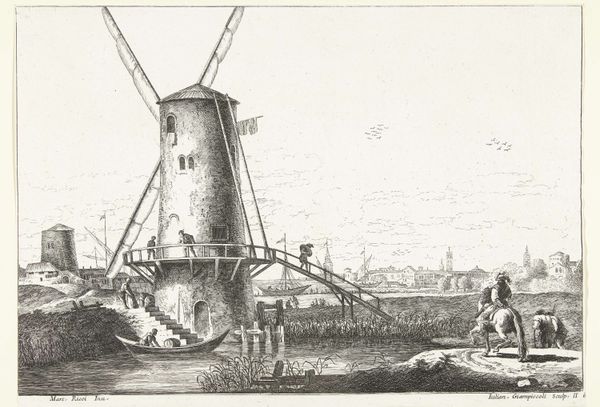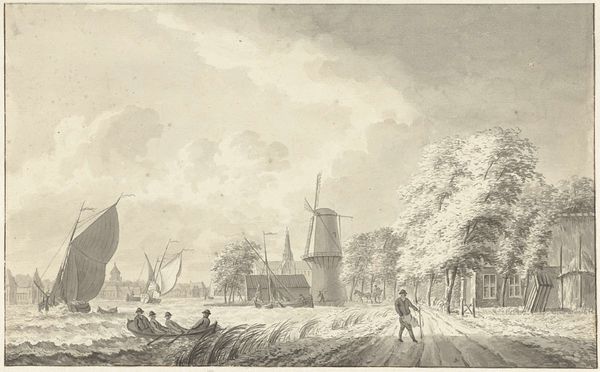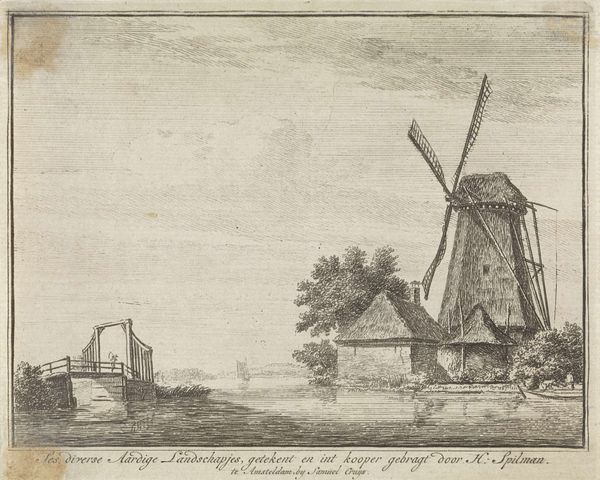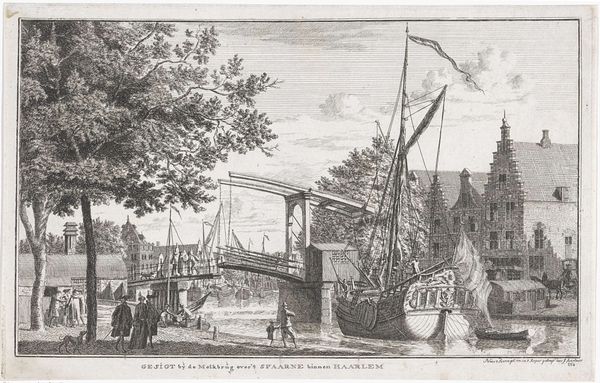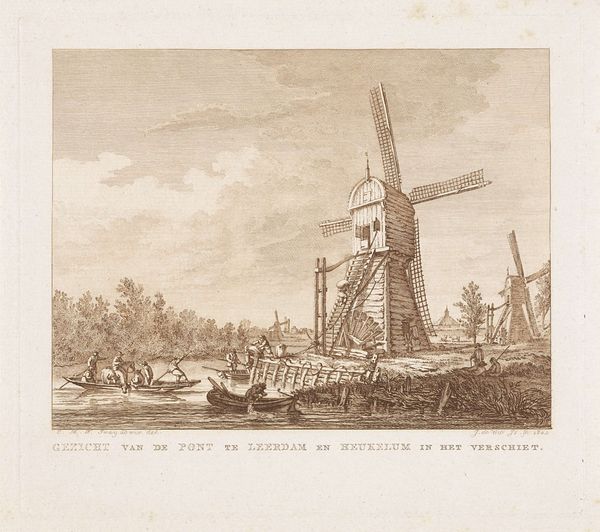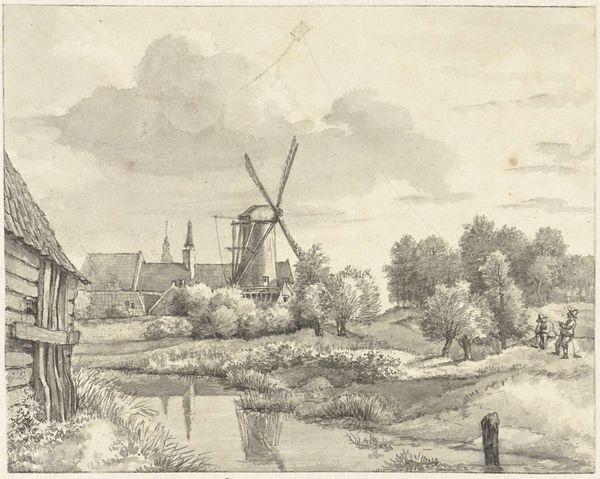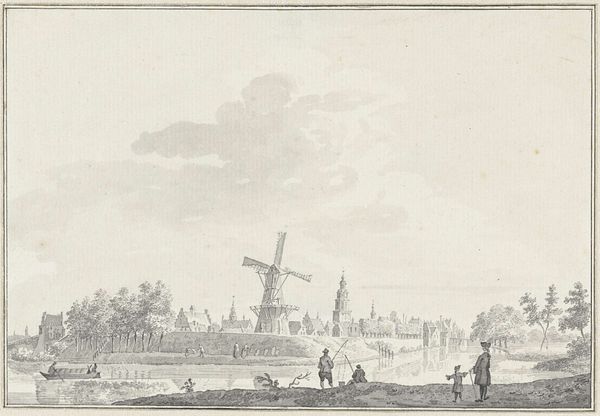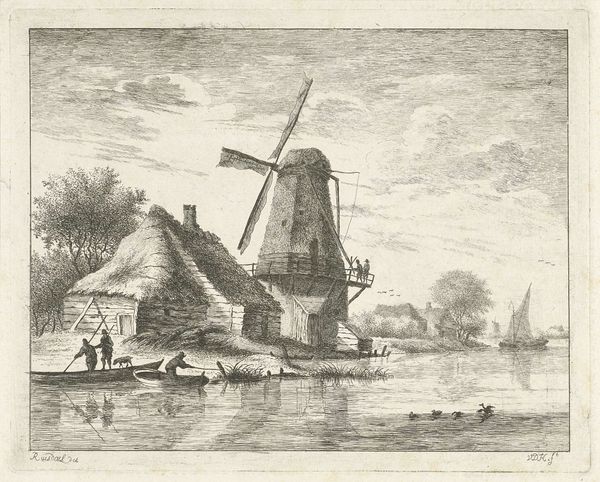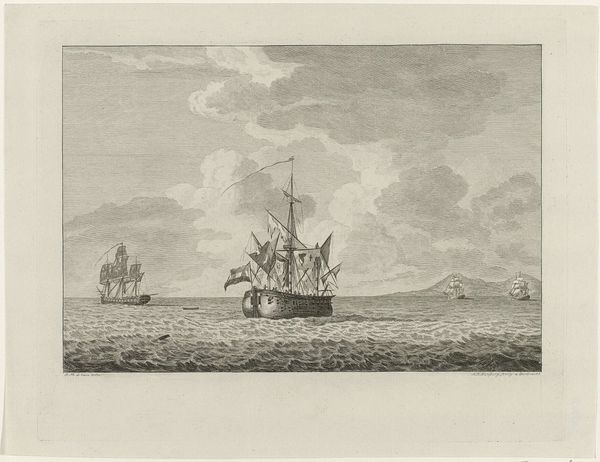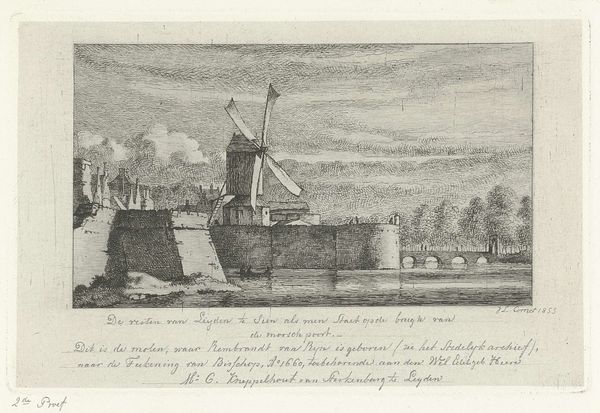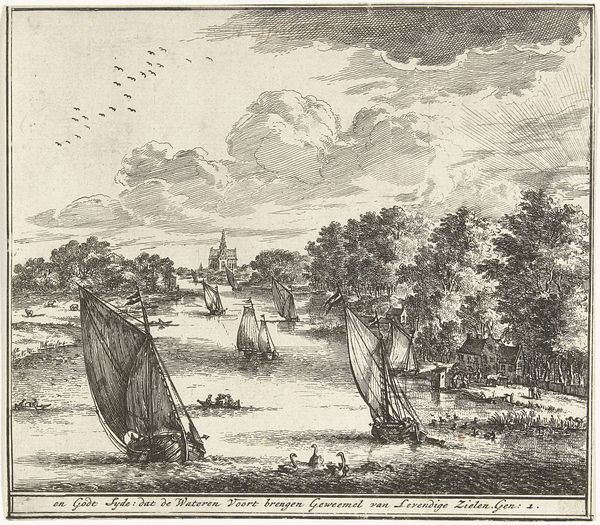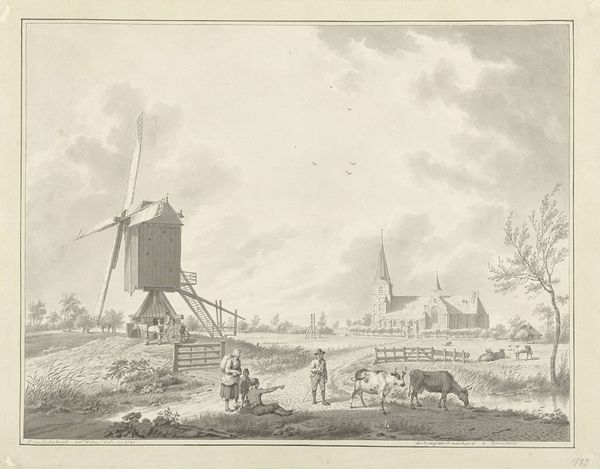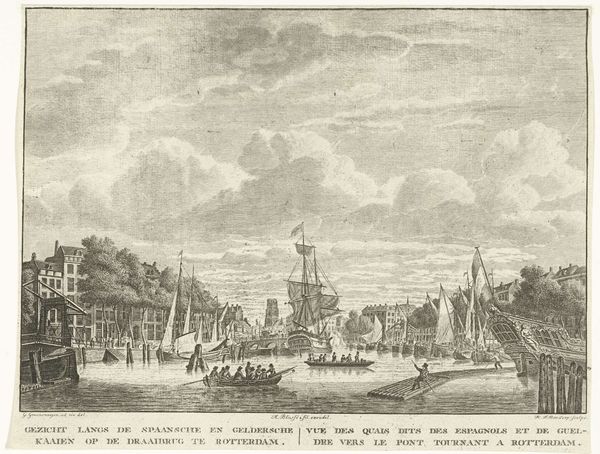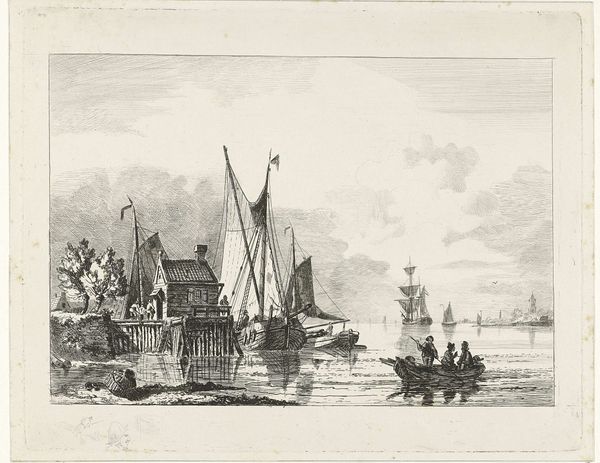
print, engraving
#
baroque
#
dutch-golden-age
# print
#
landscape
#
line
#
cityscape
#
engraving
Dimensions: height 247 mm, width 349 mm
Copyright: Rijks Museum: Open Domain
Curator: Here we have “Landschap met molen aan water,” or "Landscape with Mill on Water," created between 1739 and 1740 by Giuliano Giampiccoli. It’s an engraving, a print, and is now part of the Rijksmuseum collection. Editor: My first impression is of serenity—almost an idealized calm. The landscape is meticulously rendered with the windmill acting as this impressive centerpiece around which all the human and natural activity flows. There is, however, also an air of constraint. Curator: You've picked up on that balance beautifully. It's important to consider the historical context. This piece falls squarely into the Dutch Golden Age style, with heavy baroque influence – we can see that in the rather stylized landscape. These weren’t just depictions, but also carefully curated projections of civic pride and prosperity. The prominence of the windmill is really fascinating here. Editor: Absolutely. Windmills, especially within the context of a Dutch landscape, are about claiming space and asserting agency. They symbolize industriousness and reflect humanity shaping its environment, not merely inhabiting it. So, despite the calm, there's a powerful subtext about our intervention in nature and, by extension, society. Curator: Right. And note Giampiccoli’s technique, very linear, giving precision to detail in the building structures that make up this idyllic landscape. In these "cityscapes", one could say, buildings act as evidence for commerce and expansion. There's the windmill, but there is also other architecture—those details emphasize this theme and convey societal ambitions of the time. Editor: Exactly! Look, for instance, at the position of the people too! There are some at the docks around the windmill, seemingly for work, but others in that very beautiful little boat look like they are simply there for leisure, creating an image where the townspeople aren't excluded from the benefits of "progress". You might even perceive the beginnings of "tourism" here. However, thinking critically about the historical context, one should wonder: who is this image really for? And who exactly enjoys this imagined state of leisure and industry? Curator: That's an incredibly crucial point. We have to acknowledge the possible elitism underlying the image, designed perhaps for an upper-class consumer that seeks to justify their positioning at the top of the pyramid. These types of landscapes often glossed over social inequalities. It makes me consider the limitations within seemingly innocent imagery. Editor: Precisely, analyzing an image like this is an exciting invitation for us to dissect both what’s immediately visible, and the more intricate frameworks that produced and perpetuate such visuals. Curator: A wonderful deconstruction. Editor: And hopefully an insightful reconstruction for the visitor, too.
Comments
No comments
Be the first to comment and join the conversation on the ultimate creative platform.
